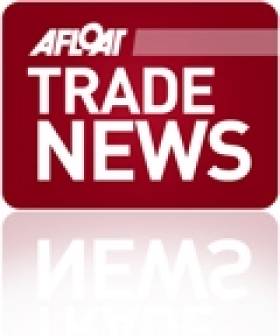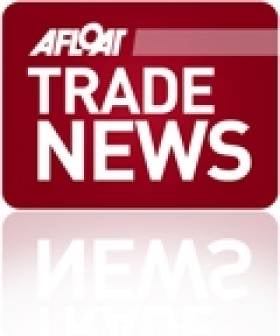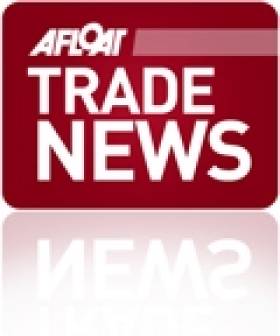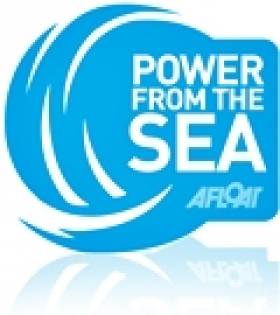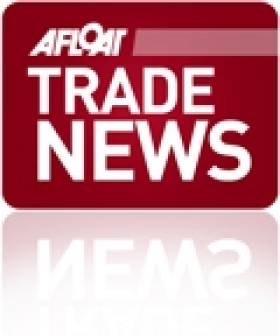Displaying items by tag: Marine Industry
New Zealand's marine industry is thriving, contributing $3 billion annually to the country's economy. The industry achieved $2.2 billion in local sales and $800 million in exports, according to new statistics released at the NZ Marine Industry conference by Executive Director Peter Busfield.
The conference, held in Tauranga, saw more than 130 people from New Zealand and Australia's marine industry come together for two days of presentations, panel discussions, networking, and brainstorming. Attendees brought with them innovative ideas, and the conference vibe demonstrated the New Zealand marine industry is in good health and is facing an exciting future.
President Garry Lock, who opened the conference, said it was great to finally have so many of the industry gathered in one place to celebrate successes and look into the future. "Although we have remained a tight group throughout all the disruptions of the past few years, it was fantastic to finally be back together in one place, talking about all aspects of our industry," Lock said.
Keynote speakers at the event included Darren Vaux, president of the International Council of Marine Industry Associations, and Andrew Fielding, president of Australia's Boating Industry Association, who shared valuable insights from a global perspective. There was also great interest in a panel session by representatives of marine companies active in the alternative power-source field, such as hydrogen and electric power, and new exciting boating forms such as foiling.
The conference also saw the presentation of NZ Marine's international and local events and promotions planned for the next 12 months, ensuring export and local sales growth opportunities for New Zealand manufacturers.
The marine industry is also facing technological changes in manufacturing processes, which will mean its 100%-owned Marine and Specialised Technology Academy training arm (MAST Academy) will continue to provide state-of-the-art industry-led apprenticeship training, providing good career pathways for school leavers and older learners alike.
The new generation of boaties want quick and easy access to go boating, cleaner power sources, and sustainable build materials in the boats they are using. They are also interested in maximising technology to achieve those goals.
The marine industry's growth is expected to continue, with more than 5500 boats expected to be built this year. The vast majority of these boats are trailer boats between 3.5 and 8m. The number of apprentices in boatbuilding and related trades has also reached 650.
"These are exciting times, and no doubt some major developments lie ahead," said Busfield. "One thing that hasn't changed, though, is how much Kiwis value their boating healthy lifestyle — 1.9 million people are regularly out on the water making boating New Zealand's most popular recreational activity. Our industry is in good heart, and we're ready to push ahead into the future and build on our tradition of innovation and success."
Following the Prime Minister's announcement on Monday 22 February outlining the roadmap of when restrictions are likely to be eased across England, British Marine met with the Department for Environment, Food and Rural Affairs (DEFRA) to clarify the guidance specific to the leisure marine industry. Representatives from the Department for Transport, the Department for Digital, Culture, Media and Sport, navigation authorities, and user groups from across the sector also took part in the meeting.
The following statement and matrix (downloadable below) have been produced, and approved by Government, detailing how British Marine members should interpret the guidance:
On 22 February, the Prime Minister announced the Government's roadmap to cautiously ease lockdown restrictions in England. The design of the roadmap has been informed by the latest scientific evidence and seeks a balance between our key social and economic priorities whilst preserving the health and safety of the country. The scientific evidence shows that opening too early or too quickly risks a further lockdown.
The approach focuses on data, not dates. Each step has a "no earlier than" date, five weeks later than the previous step, to allow time to assess the impact of the previous step and provide a week's notice before changes occur. The steps for easing restrictions will be taken at the same time across England in a national approach, in the absence of a significant regional disparity.
At each step, the Government will make an assessment against the following four tests:
- The vaccine deployment programme continues successfully.
- Evidence shows vaccines are sufficiently effective in reducing hospitalisations and deaths in those vaccinated.
- Infection rates do not risk a surge in hospitalisations which would put unsustainable pressure on the NHS.
- Our assessment of the risks is not fundamentally changed by new Variants of Concern.
From 29 March, as part of the first step, Stay at Home restrictions will be lifted. The Government will continue to advise that people minimise travel up to and including Step 3. This means avoiding making unnecessary journeys, combining trips and avoiding travel at peak times where possible. People should avoid travelling further than is reasonably necessary to take part in their activity - for instance visiting shops or making use of services closer to home.
All references to permitted activities below assume that boats allow for social distancing rules to be adhered to. COVID-Secure guidance will also remain in place up to and including Step 3 (subject to a proposed review of social distancing rules ahead of Step 4).
Premises must not cater for groups larger than the legal limits at each step unless meeting the conditions for a permitted organised gathering. These will be reintroduced at Step 2 for outdoor gatherings and Step 3 for indoor gatherings. These gatherings or events must be operated by a business, charity, public body or similar organisation and can be organised subject to specific conditions: that they comply with COVID-Secure guidance, including taking reasonable steps to limit the risk of transmission, complete a related risk assessment; and ensure that those attending do not mix beyond what is permitted by the social contact limits (unless another exemption exists, such as for organised sport or exercise, supervised activities for children or a significant life event).
Download the matrix of the reopening in the word doc below.
Ireland Needs Reliable 'Blue Growth' Stats As Marine Sector Outperforms General Economy, Spurs Innovations
#MarineIndustry - With Ireland's maritime industry definitively outperforming the general economy since the global financial crisis began, "reliable statistics" on the sector are needed to understand how the health of our waters and coastline affects the country as a whole.
That's the impetus behind new research being conducted by the Socio-Economic Marine Research Unit (Semru) at NUI Galway, together with Teagasc, to determine the indirect impact of Ireland's marine economy on the country's broader growth, as the Irish Examiner reports.
The collaboration has already produced what they call the Bio-Economy Input-Output Model, which studies the connections between Ireland’s marine and agriculture sectors and the rest of the economy – and has indicated that for every €100 in marine sector turnover, another €78 is generated across other economic sectors.
With those kinds of results, it's no surprise that Ireland's waters and coastline are being embraced as "a national asset providing incredible opportunities for tourism, energy, food and new applications for therapeutics and technology,” according to Marine Institute chief executive Dr Peter Heffernan.
“We’re building marine research infrastructure that will support and promote the development of the technology we need to harness that energy," he added. "We’re in an ideal position to become a leader in the development of ocean energy technology.”
Indeed, this prime time for Ireland's renewable energy potential was the spur for a UCC spin-out company to license a new financial modelling and analytics tool for the offshore wind and tidal power sectors.
Exceedence Ltd, founded and led by Dr Ray Alcorn, will now bring to market the ExceedenceFINANCE solution, developed by software engineers, financial analysts, industry specialists and researchers in the Marine Renewable Energy Ireland (MaREI) centre at UCC Beaufort.
“Our software analyses the viability of potential renewable projects and helps to make intelligent decisions on where and when these projects should proceed," explains Dr Alcorn.
The software is designed to help "a wide range of stakeholders" from State agencies, investors, engineers and developers "to create renewable energy infrastructure that can address the need for low or no-carbon energy within Ireland and abroad", according to University College Cork’s VP of research and innovation, Prof Anita Maguire
"This technology is very significant for the blue economy, in Ireland and internationally. We are delighted to see Exceedence develop commercially with the objective of supporting the marine industry and ultimately creating jobs.”
Domestic Growth Offsets Difficult Export Boat Market Says UK Trade Body
#Trade - Irish yacht brokers were among a range of smaller firms enjoying some buoyant trade at last week's London Boat Show.
And it's this growth within the domestic UK and Ireland market that's keeping the marine industry afloat as Britain's export market faces another difficult year, according to the Guardian.
Domestic sales have offset an 8.7% fall in foreign sales revenues across the leisure boat, small commercial vessel and superyacht markets, claims trade body the British Marine Federation (BMF).
Taking the blame for this are continuing financial troubles in the eurozone and what the industry says is Westminster's failure to provide expected funding to the BMF to attract overseas deals at shows like London and beyond.
The trade body also points out that the renewed focus on domestic sales runs against the UK government's push towards manufacturing for export.
The Guardian has more on the story HERE.
UK Marine Sector 'Exports Its Way Back To Growth'
#LondonBoatShow - The UK's domestic boat sales market is heading back towards pre-recession levels, according to marine leisure industry body the British Marine Federation.
Releasing its latest data to coincide with last week's London Boat Show, the BMF points out that the marine sector is now in a "bullish mood" at home, thanks to the support of a strong export market.
A whopping 7.7% increase in overseas trade in 2012/13 - primarily to the continent and the United States - helped drive overall revenue up by 1.7% for the same period, for a total of almost £3 billion.
The BMF also cites strong demand for boats manufactured in the UK, and forecasts for builds and sales are up, with almost half of companies across the reporting better business.
Indeed, the federation's figures show that 48% of leisure marine businesses increased turnover between May and November last year.
BMF chief executive Howard Pridding said the federation is "confident that 2014 will welcome a new period of sustained growth for the sector" that has "exported its way back into growth".
boot Düsseldorf 2013 is Marine Industry Choice as German Watersports Market Still Buoyant
#bootdusseldorf – The World's biggest yacht and watersports show is well on course for another successful showing ealry next year with boot Düsseldorf proving to be a safe haven in turbulent economic times. The yacht and watersports industry is concentrating its trade fair activities increasingly on the sector's international marketplace and filling the exhibition halls there. 1,650 exhibitors from over 50 countries will be premiering boats and presenting new products at the world's biggest yacht and watersports show from 19 to 27 January 2013. boot 2013 looks all set to pick up where its successful predecessor left off.
"We're well on course. In view of the tense situation on the international markets and particularly in southern Europe, all eyes of the industry are now on boot," says Goetz-Ulf Jungmichel, Director of boot Düsseldorf. "Numerous exhibitors want to book extra space. We are confident that the 17 boot halls will be filled pretty well to capacity and expect plenty of innovations and boat premieres and even a number of new arrivals from the international yacht scene."
The German boat and watersports market is currently "standing firm", according to the German Marine Federation (BVWW) in Cologne. It is proving to be in a much stronger state than its European neighbours, which applies particularly to the Mediterranean region strongly affected by the European debt crisis. boot Düsseldorf is benefiting from this scenario and has become the industry's premier choice.
Exhibitors are pinning their hopes on a continuation of German consumers' buying mood and on the roughly 50,000 foreign visitors with money to spend who travel to boot Düsseldorf from all over the world every year to find out all about the latest innovations in the boat and yacht sector.
International brand diversity
Roughly 40 per cent of those participating in boot 2013 will be coming from outside Germany. Some 650 foreign exhibitors from well over 50 countries are contributing to the highly international quality of what's on show at the trade fair centre. The biggest foreign contingent is the Netherlands with 140 exhibiting boatyards, equippers and service providers, followed by France and Italy each with 50 exhibitors, the United Kingdom with 30 and Austria 26.
International brand diversity is being bolstered by joint participations of leading boatbuilding nations. The UK, Finland, France, the Netherlands, Poland and Hungary have registered with joint stands.
Magnificent selection of sailing vessels
According to the BVWW, customers are currently showing a preference for value-retaining upmarket motor and sailing yachts. But there is also demand for trailerable motor boats. At boot 2013, the customer has a huge choice. In 11 exhibition halls, 440 exhibitors will be showing some 1700 boats and yachts of all sizes, ranging from canoes to large luxury yachts.
There is a magnificent selection of sailing boats under the boot 2013 umbrella. Over 150 international exhibitors will be presenting their premieres and further-developed products in Halls 16 and 17. Devotees of multihull vessels should make a detour to neighbouring Hall 15 where 15 exhibitors will be showing catamarans and trimarans of all sizes. The small but select segment of multihulls has come along very well in the last two years and is being given its own food & drink area at boot 2013, which will also offer space for meetings with customers and exchanges of information. On the Multihull Forum stage, the German association of multihull sailing boats Multihull Deutschland e.V. will be presenting information on sailing with catamarans and trimarans.
World market for motorised leisure boating
In the motor boat and motor yacht sector, Düsseldorf is offering almost everything that's available on the market, ranging from inflatable boats with outboard motors via open sports boats, day cruisers and cabin cruisers to large yachts. In a total of six halls, more than 250 boatyards, brokers and importers will be providing a representative overview of motorised leisure boating. Hall 4 is responding to the trend towards environment-friendly drives. On an area of 1600 square metres, boats with electric and hybrid drives will be on show at boot 2013. Steel yacht building, a Dutch speciality, is being jointly presented by a total of 20 exhibitors in Hall 15.
Run on refits
Everything one needs for and on boats – marine electronics, engines, accessories, functional clothing and marina equipment – can be found in Halls 11 and 12. The equipment market is in excellent shape. "Refit" is the buzz word, and there is currently strong interest in maintaining the value of existing boats. 350 international exhibitors are offering everything that's necessary and possible for smartening up boats and furnishing them more luxuriously.
Curtain up for large yachts
Hall 6 is the dazzling showcase for large, luxury yachts. For the big names in the world of large yachts – the likes of Ferretti, San Lorenzo, Princess and Riva – there's no alternative to boot Düsseldorf even in difficult times. With some 40 large yachts coupled with high-end boats and tenders plus a number of first-time and returning exhibitors, the standard of offering in large yacht Hall 6 has clearly stabilised. The new and established participants include such boatyards as Montefino, Marquis Yachts and Prestige. In the extra-large yacht sector, Sunseeker, Princess, Acico and Ferretti will be entering the stage with a broad array of models and novelties. The biggest yacht at boot 2013 is roughly 30 metres long and comes from the UK-based Princess boatyard.
To enhance brand diversity, boot is offering its customers the chance to present themselves at image stands. Leading boatyard exhibitors like Mangusta and Dominator from Italy and Gulcraft from the United Arab Emirates are seizing the opportunity. Computer-aided applications like augmented reality, with the aid of which exhibited items such as yacht models or images can be supplemented with virtual yacht animations via smartphone cameras, can be used in this form of "yachtless" presentation to supplement the existing range of information.
The blue motion lounge in Hall 6 is available to high-calibre customers from the industry as a business and shopping zone. It comes with high-quality catering, comfortably furnished areas for meetings with customers and negotiations, and shopping opportunities in exclusive boutiques. Exhibitors from the luxury retail trade will be present with jewellery, watches and exclusive interior decoration.
Excellently booked, as always, is Düsseldorf's Superyacht Show in Hall 7a. 100 exhibitors will be demonstrating their skills in the realisation of exclusive yachtbuilding projects, showing current plans and models at information stands and reporting on sector-specific services. The joint exhibitors here include Deutsche Yachten, Superyacht France and the Holland Yachting Group.
High level of bookings for diving
The world's biggest scuba diving show under the boot umbrella in Hall 3 is recording lively interest. Overall, some 350 exhibitors will be presenting diving equipment and diving destinations worldwide. Big-name exhibitors from the equipment sector like Aqua Lung are extending their presentations, and Mares is coming with its international diving centres to Düsseldorf. Visitors can expect marked growth in the offering of the trade and an abundance of exciting scuba diving destinations. On large joint stands, the Philippines, Maldives, Indonesia and Italy will be publicising their qualities as diving destinations. Small diving bases from Egypt are presenting themselves under the taucher.net umbrella.
Underwater photography now supplemented by the Watersports Photo and Video Center
The theme of underwater and outdoor photography in Hall 4 has developed very well. The Underwater Pixel World will be known as the Water Pixel World at boot 2013. This successfully established forum for underwater photography is now being supplemented by the Watersports Photo and Video Center with its brand-new action and outdoor cameras and will thus become the point of convergence for the entire leisure and sport photography world.
Experience 360° of watersports: 16 theme and adventure worlds
Under the motto "Experience 360° watersports", 16 theme and adventure worlds will await boot visitors next January. Those who practise watersports – anglers, surfers, kiters, divers, sailors paddlers or charterers – or wish to get to know a watersport will find their own special "world" at boot Düsseldorf.
This concept has been very well received. The numerous opportunities for trying out watersports in the exhibition halls attracted more young people and families to boot in the last three years.
boot 2013 will be offering international visitors this and more from 19 to 27 January daily from 10 am to 6 pm. Visitors can save time and money by purchasing boat admission tickets online. As a one-day ticket, the eTicket for adults costs EUR 14, EUR 4 less than over the counter. The two-day ticket is available for EUR 23. The ticket for a quick stroll through the exhibition centre – Monday to Friday from 3 pm – costs EUR 9 in the online shop. The tickets can be printed straight after purchase and used for free travel to and from the fair via the public transport network VRR (Verkehrsverbund Rhein-Ruhr). Tickets are available at www.boot.de.
Scotland To Host World's Biggest Tidal Power Array
Scotland's west coast will be home to the world's largest tidal power facility, it has been announced.
The £40 million (€45.9 million) 10MW tidal array, to be developed by ScottishPower Renewables in the Sound of Islay, will generate power for more than 5,000 homes.
Scottish Cabinet Secretary for Finance John Swinney, who signed off on the deal, described the project as "a milestone in the global development of tidal energy".
"Scotland's seas have unrivalled potential to generate green energy, create new, low carbon jobs, and bring billions of pounds of investment to Scotland," he said.
The project comes in tandem with the consultation process for the Scottish government's National Marine Plan, intended to highlight the best opportunities for investment across all marine industries.
Energy & Environmental Management has more on the story HERE.
MGM Boats Complete ABYA Training
The sales team at MGM Boats have now completed the necessary training to qualify for membership of the Association of Yacht Brokers and Agents (ABYA). In line with the steady expansion of its Brokerage department MGM say they are committed to keeping the code set out by the association.
ABYA endorse a strict Code of Practice that has been specifically written for conducting the business of yacht brokerage. ABYA also run a Practical Yacht Brokerage Courses. This allows members to keep up to date with both legal and technical aspects of boat sales, ensuring their credibility both to the client and within the legal system.
The Association of Brokers and Yacht Agents (ABYA) exists to promote the highest standards of professionalism and expert knowledge in the field of yacht sales, and expects high standards of its members. Membership is only open to existing practising brokers and new boat sales personnel with a proven track record in the industry. For all grades of membership there is rigorous scrutiny of the applicant's work. A Continuous Professional Development scheme exists to ensure that members update their knowledge regularly, and Members' work is monitored on a regular basis.
The Association holds regular training Seminars and Forums in house and maintains close contact with other professionals in the marine industry such as Law firms and Insurance houses, many of whom are "partners" to the Association. All members are required to carry Professional Indemnity insurance.
Graphic Design and Printing
Graphic Design and Printing Service
Don't miss out on promoting your business.
Afloat magazine serves as the voice of the marine industry but we offer a design, typesetting, and website printing service too.
From simple stationery items and logos to complex website design and full colour brochures, we offer special discounts to firms in the marine industry.
Please call for a quotation. No job too small. Tel: 01 284 6161 or 01 2020 374.



























